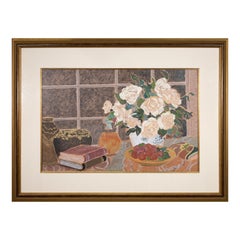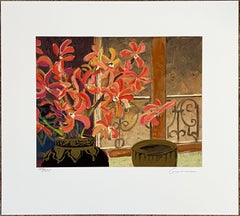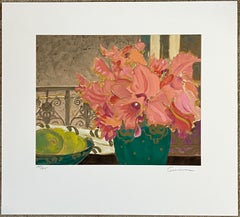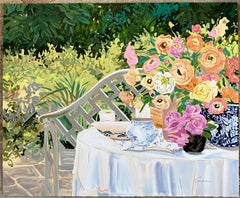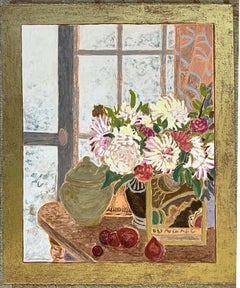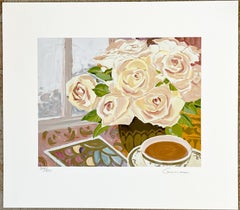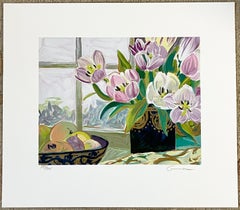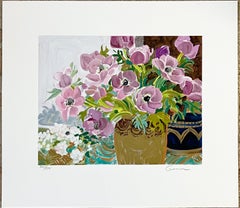Ellen Gunn
1990s American Prints
Paper
1990s Impressionist Still-life Prints
Paper, Screen
1990s Impressionist Still-life Prints
Paper, Screen
1990s Impressionist Still-life Prints
Paper, Screen
1990s Impressionist Still-life Prints
Paper, Screen
1990s Impressionist Still-life Prints
Paper, Screen
1990s Impressionist Still-life Prints
Paper, Screen
Recent Sales
1990s Impressionist Still-life Prints
Paper, Screen
1990s Impressionist Still-life Prints
Paper, Screen
1990s Impressionist Still-life Prints
Paper, Screen
People Also Browsed
2010s Swedish Modern Pillows and Throws
Mohair
21st Century and Contemporary Italian Modern Wall Lights and Sconces
Brass
Early 20th Century Unknown Chinoiserie Wallpaper
Canvas, Paper
20th Century French French Provincial Benches
Upholstery, Cane, Oak
Mid-20th Century English Dinner Plates
Porcelain
20th Century American Mid-Century Modern Beds and Bed Frames
Cherry
Antique 18th Century Other Dinner Plates
Enamel
Mid-20th Century American Mid-Century Modern Game Tables
Brass
20th Century Organic Modern Picture Frames
Leather, Wood
Vintage 1940s French Art Nouveau Floor Mirrors and Full-Length Mirrors
Art Glass, Mirror, Wood, Paint
20th Century English Regency Wall Brackets
Metal
Antique Late 19th Century British Chinoiserie Tableware
Faience
2010s American Rococo Pillows and Throws
Cotton, Linen, Silk
Antique Early 1800s English Georgian End Tables
Oak
20th Century American Mid-Century Modern Cupboards
Brass
Antique Late 19th Century British Chinoiserie Tableware
Faience
A Close Look at Impressionist Art
Emerging in 19th-century France, Impressionist art embraced loose brushwork and plein-air painting to respond to the movement of daily life. Although the pioneers of the Impressionist movement — Claude Monet, Edgar Degas, Paul Cézanne, Berthe Morisot, Camille Pissarro, and Pierre-Auguste Renoir — are now household names, their work was a radical break with an art scene led and shaped by academic traditions for around two centuries. These academies had oversight of a curriculum that emphasized formal drawing, painting and sculpting techniques and historical themes.
The French Impressionists were influenced by a group of artists known as the Barbizon School, who painted what they witnessed in nature. The rejection of pieces by these artists and the later Impressionists from the salons culminated in a watershed 1874 exhibition in Paris that was staged outside of the juried systems. After a work of Monet’s was derided by a critic as an unfinished “impression,” the term was taken as a celebration of their shared interest in capturing fleeting moments as subject matter, whether the shifting weather on rural landscapes or the frenzy of an urban crowd. Rather than the exacting realism of the academic tradition, Impressionist paintings, sculptures, prints and drawings represented how an artist saw a world in motion.
Many Impressionist painters were inspired by the perspectives in imported Japanese prints alongside these shifts in European painting — Édouard Manet drew on ukiyo-e woodblock prints and depicted Japanese design in his Portrait of Émile Zola, for example. American artists such as Mary Cassatt and William Merritt Chase, who studied abroad, were impacted by the work of the French artists, and by the late 19th century American Impressionism had its own distinct aesthetics with painters responding to the rapid modernization of cities through quickly created works that were vivid with color and light.
Find a collection of authentic Impressionist art on 1stDibs.
Finding the Right Still-life-prints-works-on-paper for You
As part of the wall decor in your living room, dining room or elsewhere, original still-life prints and other still-life wall art can look sophisticated alongside your well-curated decorative objects and can help set the mood in a space.
Still-life art, which includes work produced in media such as painting, photography, video and more, is a popular genre in Western art. However, the depiction of still life in color goes back to Ancient Egypt, where paintings on the interior walls of tombs portrayed the objects — such as food — that a person would take into the afterlife. Ancient Greek and Roman mosaics and pottery also often depicted food. Indeed, popular still-life prints often feature food, flowers or man-made objects. By definition, still-life art represents anything that is considered inanimate.
During the Middle Ages, the still life genre was adapted by artists who illustrated religious manuscripts. A common theme of these still-life paintings is the reminder that life is fleeting. This is especially true of vanitas, a kind of still life with roots in the Netherlands during the 17th century, which was built on themes such as death and decay and featured skulls and objects such as rotten fruit. In northern Europe during the 1600s, painters consulted botanical texts to accurately depict the flowers that were the subject of their work.
While early examples were primarily figurative, you can find still lifes that belong to different schools and styles of painting and printmaking, such as Cubism, Impressionism and contemporary art.
Leonardo da Vinci’s penchant for observing phenomena in nature and filling notebooks with drawings and notes helped him improve as an artist of still-life paintings. Vincent van Gogh, an artist who made a couple of the most expensive paintings ever sold, carried out rich experiments with color over the course of painting hundreds of still lifes, and we can argue that Campbell’s Soup Cans (1961–62) by Andy Warhol counts as still-life art.
Still-life art enthusiasts and collectors of Warhol prints have lots of reasons to love the cultural icon — when Warhol brought the image of a Campbell’s soup can out of the supermarket and into the studio, in 1961, he secured his legacy as a radical contemporary artist. After Warhol painted the soup cans, he realized that he could more readily achieve the mass-produced aesthetic he was seeking with silkscreens, also called screen-prints, and he began experimenting with silkscreening on canvas. He used the technique to print paintings of Coke bottles and dollar bills (both in 1962), as well as his treasured Brillo box sculptures (1964).
When shopping for a still-life print, think about how it makes you feel and how the artist chose to represent its subject. When buying any art for your home, choose pieces that you connect with. If you’re shopping online, read the description of the work to learn about the artist and check the price and shipping information. Make sure that the works you choose complement or relate to your overall theme and furniture style. Artwork can either fit into your room’s color scheme or serve as an accent piece. Introduce new textures to a space by choosing an oil still-life painting.
On 1stDibs, the collection of still-life prints and other still-life wall art includes works by Jonas Wood, Alex Katz, Nina Tsoriti and many more.
